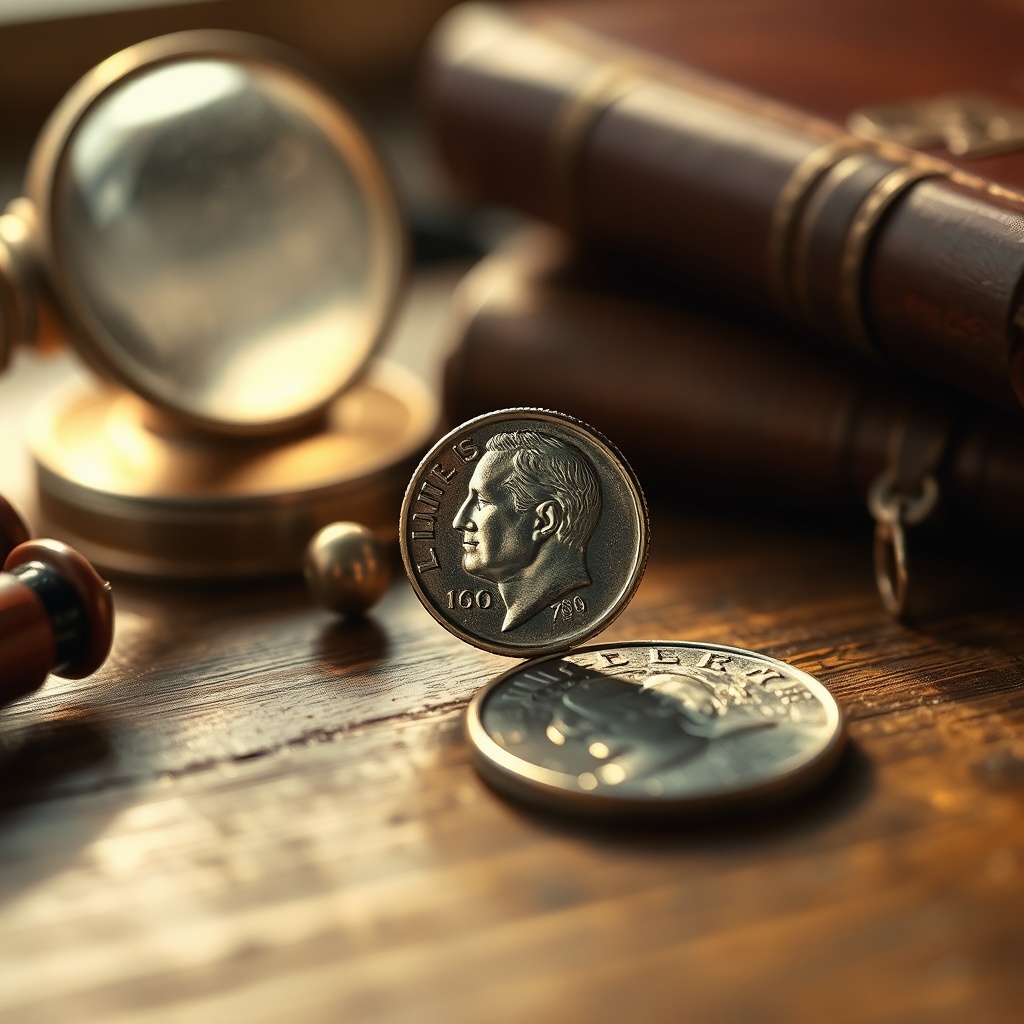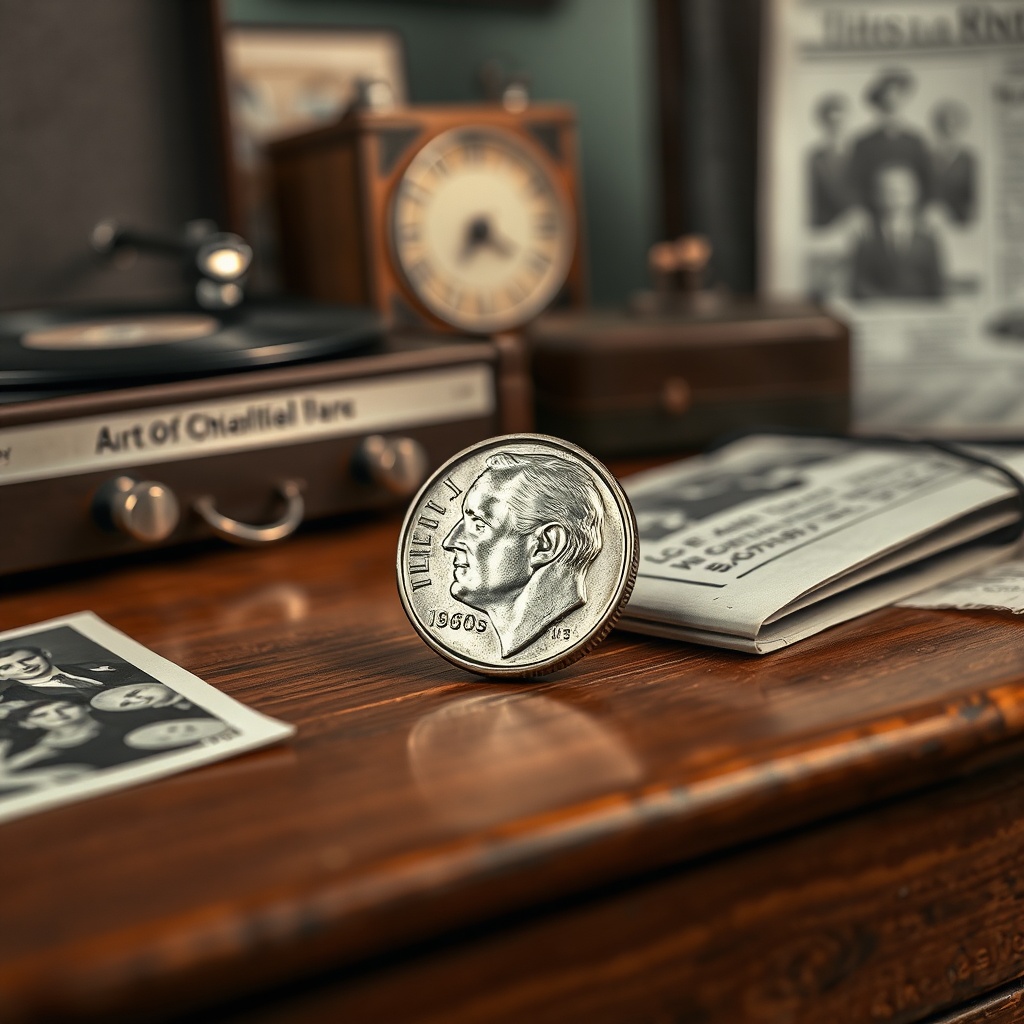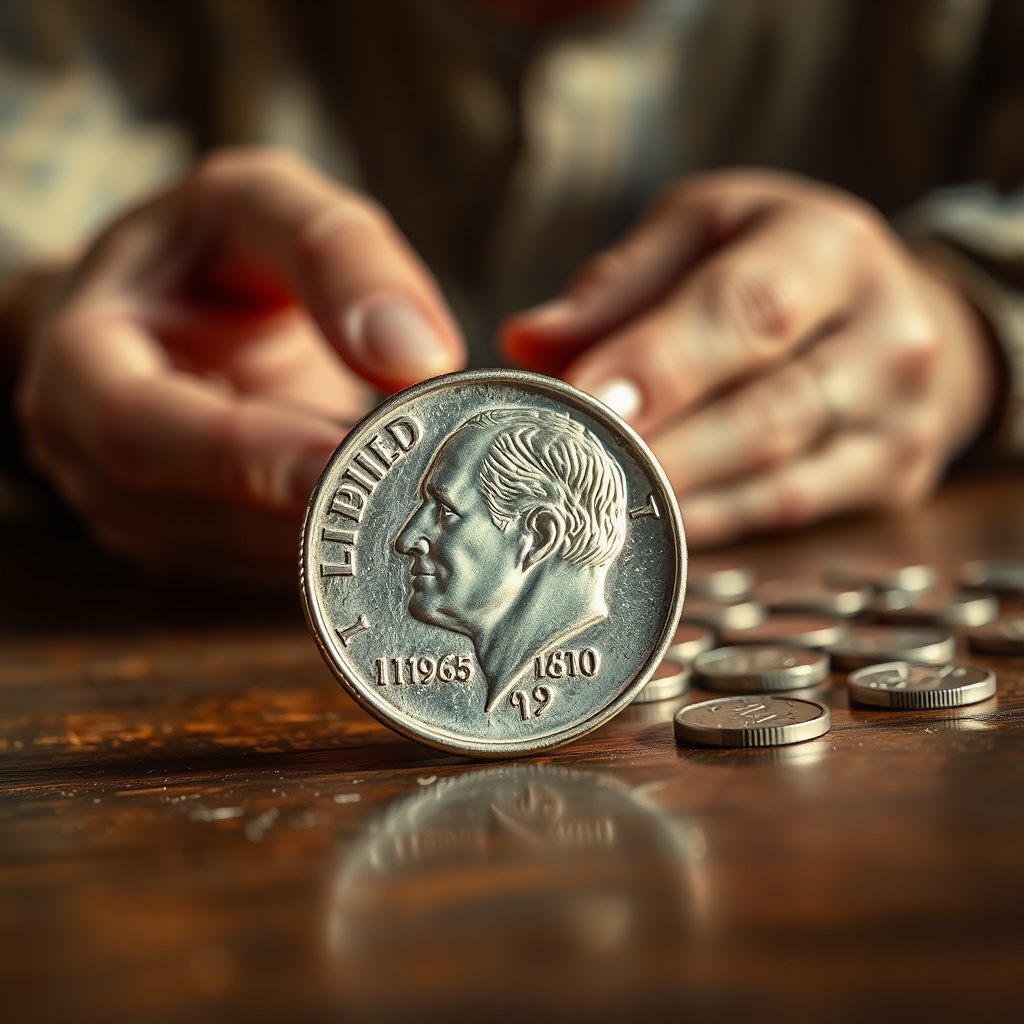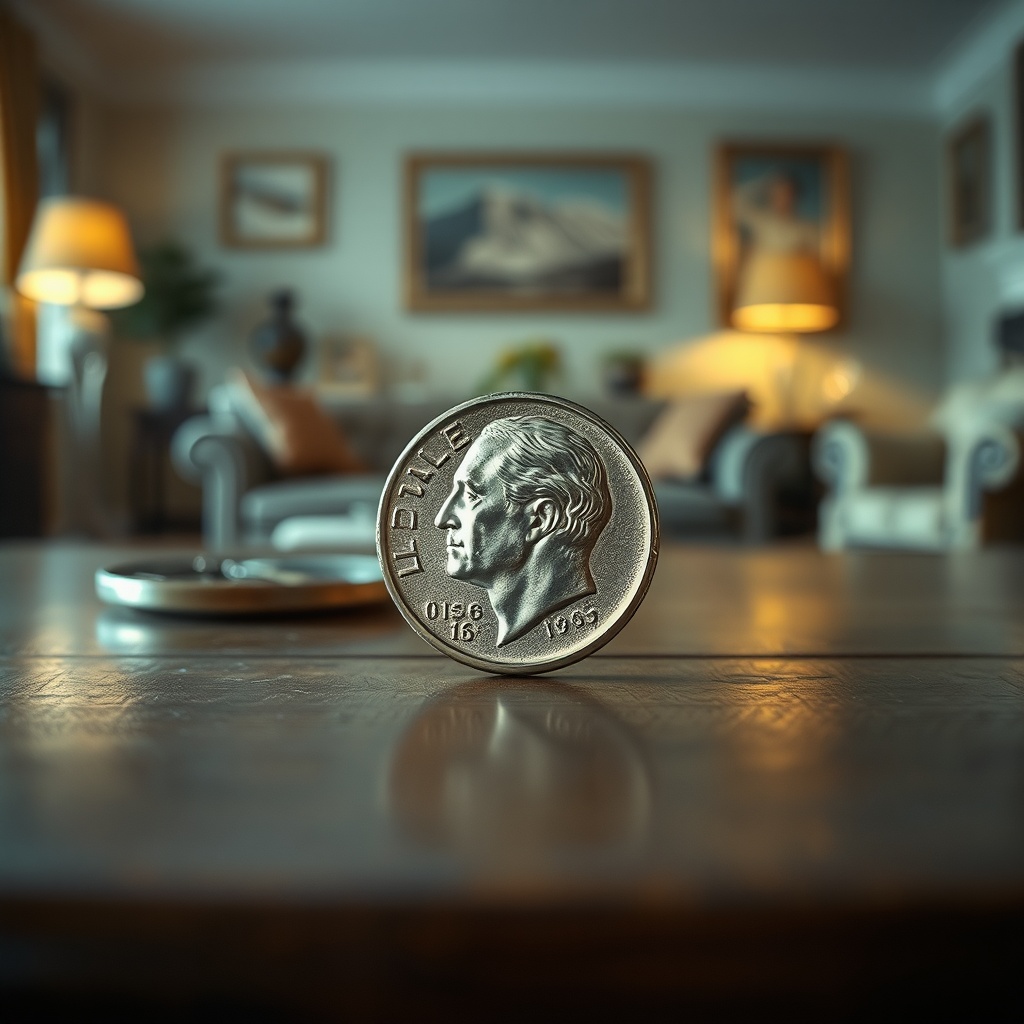Discovering the Hidden Gems: What Makes 1960s Dimes So Special?

Introduction to 1960s Dimes
Have you ever held a dime from the 1960s in your hand and wondered about its story? These small coins, often overlooked, hold a wealth of history, artistry, and value that many may not realize. Let’s embark on a journey to uncover the hidden gems of these dimes.
The Design and Composition
The dimes produced in the 1960s are unique not only in their design but also in their metal composition. The iconic Roosevelt dime, introduced in 1946, features President Franklin D. Roosevelt on the obverse and a torch, olive branch, and oak branch on the reverse. But what makes the dimes from this decade so special?
- Composition: Dimes minted before 1965 were composed of 90% silver and 10% copper.
- Design Details: The intricate details of the design are a testament to the artistry of coin production.
Why Collect 1960s Dimes?
Collecting dimes from the 1960s can be an exciting hobby, but it also offers other benefits:
- Investment Potential: With the rising value of silver, many collectors see these dimes as a solid investment.
- Historical Significance: Each dime tells a part of American history, reflecting the era’s values and aesthetics.
- Variety: The 1960s saw different mint marks and designs, making it fun to hunt for unique pieces.
Valuable Variants
Some dimes from the 1960s are more valuable than others due to their rarity or condition. Here are a few to keep an eye out for:
| Year | Mint Mark | Estimated Value (in Good Condition) |
|---|---|---|
| 1964 | None | $2.50 |
| 1964-D | D | $2.50 |
| 1965 | None | $1.50 |
| 1966 | None | $1.50 |
| 1967 | None | $1.50 |
How to Evaluate Your Dimes
When evaluating your dimes, consider the following factors:
- Condition: Coins in better condition are worth more. Look for scratches, wear, and tarnish.
- Mint Marks: Check for mint marks (D for Denver, S for San Francisco) that can affect value.
- Market Trends: Monitor the current market for silver and coin collecting trends to estimate value.
1960s dimes are more than just coins; they are pieces of history filled with stories and potential value. Whether you’re a seasoned collector or a curious individual, exploring these hidden treasures can be a rewarding experience.
A Journey Through Time: The Historical Significance of 1960s Dimes

Introduction to the 1960s Dimes
Imagine holding a small piece of silver in your hand, a coin that tells a story of a vibrant decade filled with change and innovation. The dimes minted in the 1960s are more than just currency; they are a glimpse into a transformative era in American history.
The 1960s: A Decade of Change
The 1960s were marked by significant social and political upheaval. From the Civil Rights Movement to the Vietnam War, the decade was a turning point for many aspects of American life. As you think back to this time, consider how the events of the 1960s influenced everyday Americans, including the way they handled their money.
Minting History
The dimes produced during this time were part of the Roosevelt dime series, first introduced in 1946. However, the 1960s saw notable changes in minting techniques and materials. Most dimes from this decade were composed of 90% silver and 10% copper, making them particularly valuable today.
Economic Factors
As inflation began to rise in the late 1960s, the purchasing power of dimes changed drastically. Do you remember what a dime could buy back then? This coin was once a gateway to a soda, a candy bar, or even a bus fare. Reflect on how the value of money evolves over time.
Collectibility and Value
For collectors, the 1960s dimes hold a special allure. Key dates such as 1964, when the last of the silver dimes were minted, are particularly sought after. Have you ever wondered how much your old coins might be worth? They could be worth more than their face value!
Preservation of History
Each dime tells a story. They are tangible connections to the past. Whether you have a collection or a single coin, preserving these dimes is essential. Consider storing them in a cool, dry place to maintain their condition.
Engaging with Collectors
Have you ever participated in a coin show or club? Engaging with fellow collectors can enhance your appreciation for these coins. You can share stories, trade coins, or simply learn more about the history behind your collection.
As you reflect on the 1960s dimes, remember that they are more than just coins; they are a reflection of a time filled with hope, challenge, and change. What memories do these dimes evoke for you? Embrace the journey through time that these small treasures represent.
From Pocket Change to Collector’s Delight: The Value of 1960s Dimes

Have you ever rummaged through your old coins, only to find a shiny dime from the 1960s? It might seem like just another piece of pocket change, but hold on! That dime could be worth more than you think. Let’s explore the fascinating journey of these little treasures.
The 1960s Dime: A Brief Overview
The dimes minted in the 1960s feature the iconic profile of President Franklin D. Roosevelt. They were initially produced for practical use, but over time, their significance has evolved. As we delve deeper, you’ll discover why these coins are cherished by collectors.
Understanding the Value
What makes a 1960s dime valuable? The value of a coin can be influenced by several factors:
Mint Condition: Coins that are uncirculated or in excellent condition fetch higher prices.
Rarity: Some years produced fewer dimes, making them harder to find.
Numismatic Value: Coins with historical significance or unique features often attract collectors.
Spotting the Rare Finds
Not all 1960s dimes are created equal. Some specific coins may hold more value:
1964 Dime: This year marks the last of the silver dimes, making it particularly desirable.
1965-1969 Dimes: These are primarily made of copper-nickel, but certain errors or varieties can be worth more.
How to Assess Your Dimes
Ready to see if your dime is a hidden treasure? Here’s how you can assess its value:
Examine the Condition: Check for scratches, wear, and overall appearance.
Check for Mint Marks: Look for a mint mark on the reverse side, as this can indicate rarity.
Consult Price Guides: Use numismatic references or online resources to gauge current market values.
Where to Sell or Trade
If you’ve discovered a valuable dime, you may want to sell or trade it:
Coin Dealers: Professional dealers can offer fair prices and insights.
Online Auctions: Platforms like eBay allow you to reach a broader audience.
Coin Shows: Attend local shows to connect with fellow collectors and potential buyers.
Join the Community
Becoming a part of the coin-collecting community can enhance your experience:
Forums and Groups: Engage with other enthusiasts to share tips and insights.
Local Clubs: Join a club to attend meetings and events focused on numismatics.
Your 1960s dimes may be more than just relics of the past; they could be gateways to a rewarding hobby and financial opportunity. So, the next time you find a dime, take a moment to appreciate its potential value. You never know, it could turn from pocket change to collector’s delight!
Unlocking Secrets: How to Identify Valuable 1960s Dimes in Your Collection
Understanding the 1960s Dimes
The 1960s were a transformative decade for American currency. If you have dimes from this era, you might possess more than just pocket change. Let’s dive into how you can identify which of your 1960s dimes might hold hidden value.
Why 1960s Dimes Matter
The 1960s dimes are significant not only for their age but also for the composition and rarity of certain coins. The dimes produced during this decade were primarily made from 90% silver, which makes them appealing to collectors and investors alike.
Identifying Key Features
To determine the value of your dimes, look for the following key features:
- Year of Minting: Certain years produced fewer coins, making them more valuable.
- Mint Marks: Check for mint marks on the reverse side of the coin. A ‘D’ for Denver or ‘S’ for San Francisco can indicate a higher value.
- Condition: The grade of the coin (Good, Very Good, Fine, etc.) significantly affects its market value.
Valuable 1960s Dimes to Look For
| Year | Mint Mark | Value |
|---|---|---|
| 1964 | No Mint Mark | $2.00+ |
| 1964-D | D | $2.00+ |
| 1965 | No Mint Mark | $1.50+ |
| 1966 | No Mint Mark | $1.50+ |
| 1967 | No Mint Mark | $1.50+ |
| 1968-D | D | $1.50+ |
| 1969-D | D | $1.50+ |
How to Assess the Condition
Here’s a simple guide to help you assess the condition of your dimes:
- Good: Shows heavy wear; major details are visible.
- Very Good: Clear details, but some wear; all features are identifiable.
- Fine: Moderate wear, with most details still visible.
- Very Fine: Light wear; all details are sharp.
- Uncirculated: No wear; mint condition.
Where to Sell Your Dimes
If you discover that you have valuable 1960s dimes, consider the following options for selling:
- Local Coin Shops: They can provide immediate cash offers.
- Online Marketplaces: Websites like eBay can help you reach a wider audience.
- Coin Shows: Great places to meet collectors and sell coins.
With a careful examination, you can unlock the secrets hidden within your collection of 1960s dimes. Whether for sentimental value or potential profit, knowing how to identify these valuable coins can be rewarding. Start your treasure hunt today!
The Thrill of the Hunt: Tips for Finding Rare 1960s Dimes in Everyday Life
The Excitement of Discovery
For many, the thrill of hunting for rare coins, particularly the 1960s dimes, brings back fond memories of yesteryears. Whether you’re sipping coffee at home or browsing through your local shops, keep an eye out for these hidden treasures!
Know What to Look For
Understanding the specific characteristics of 1960s dimes is essential. Here are some key points to keep in mind:
| Year | Mint Mark | Value |
|---|---|---|
| 1964 | No Mint Mark | $2.00+ |
| 1965 | No Mint Mark | $2.00+ |
| 1966 | No Mint Mark | $2.00+ |
| 1967 | No Mint Mark | $2.00+ |
| 1968 | S | $3.00+ |
| 1969 | S | $3.00+ |
Where to Search
Here are some common places where you might stumble upon these elusive dimes:
Coin Rolls: Check the change at the bank. Coin rolls often have older coins mixed in.
Garage Sales: People often sell old coins without knowing their value.
Local Flea Markets: Vendors might have boxes of coins that are worth much more than their asking price.
Be a Smart Collector
As you embark on your treasure hunt, remember these important tips:
Inspect Coins Carefully: Look for wear and tear; the condition significantly affects the value.
Use a Magnifying Glass: This helps you spot mint marks and other details that indicate value.
Join a Community: Engage with local coin clubs or online forums to share experiences and tips.
Document Your Finds
Keep a log of your discoveries. Not only is it exciting to track what you have found, but it also helps you understand market trends and values.
Final Thoughts
The hunt for 1960s dimes can be a delightful way to spend your time. The joy of discovering a rare coin is priceless. Happy hunting!
Stories Behind the Coins: Fascinating Facts About 1960s Dimes
The dimes minted in the 1960s hold more than just their face value of ten cents. They are a window into a transformative decade in American history. Let’s dive into the fascinating stories that these coins tell.
Historical Context
The 1960s were a period of significant change, from civil rights movements to the space race. The coinage from this era reflects these changes:
- 1964: The last year of the silver dime, which was made of 90% silver. This makes those dimes particularly valuable today.
- The Kennedy Influence: The assassination of President John F. Kennedy in 1963 led to the minting of the Kennedy half dollar, but it also changed the public’s perception of coins and currency.
Design and Features
1960s dimes feature the iconic image of:
- Rosie the Riveter: The figure of Liberty, depicted by the artist Adolph A. Weinman, symbolizes the spirit of American workers during World War II.
- Unique Mint Marks: Depending on where they were minted, dimes may have different mint marks (P, D, S) which can influence their value.
Did you know that some 1960s dimes can be worth much more than their face value? Here’s why:
- Silver Content: Dimes minted in 1964 or earlier contain a significant amount of silver, making them sought after by collectors.
- Rarity: Certain errors in minting, such as double strikes, can make specific dimes more valuable.
Interesting Facts
Here are some intriguing tidbits about 1960s dimes that you might not know:
- Last of the Silver: 1964 was the last year that dimes were made of silver, marking the end of an era in U.S. coinage.
- Collecting Boom: The late 1960s saw a surge in coin collecting, with many people starting to save dimes, quarters, and half dollars from this period.
As you sift through your spare change, take a moment to appreciate the stories behind the 1960s dimes. These coins are not just currency; they are pieces of history that reflect the times they were minted in. Whether you are a seasoned collector or just someone curious about the past, 1960s dimes hold hidden treasures waiting to be discovered.
Investing in History: Why 1960s Dimes Can Be a Smart Financial Choice
Understanding the Appeal of 1960s Dimes
Have you ever thought about what makes certain coins special? The dimes minted in the 1960s are not just pocket change; they hold a unique place in history and finance. Collecting these coins can be an engaging hobby that also offers the potential for financial growth.
The Historical Context
The 1960s were a transformative decade in the United States, characterized by social change and economic shifts. Dimes from this era, particularly those minted before 1965, contain 90% silver. This intrinsic value is a significant factor that attracts collectors and investors alike.
The Financial Benefits
Investing in 1960s dimes can be a smart financial choice for several reasons:
Intrinsic Value: Because these dimes are made of silver, their value often exceeds their face value of 10 cents. As silver prices rise, so does the value of these coins.
Collector Demand: Many collectors seek out 1960s dimes, especially those in excellent condition. This demand can drive up prices, creating an opportunity for profit.
Long-term Investment: Coins can appreciate over time. With a growing interest in precious metals, holding onto these dimes could yield a significant return in the future.
How to Start Collecting
If you’re intrigued and considering investing in 1960s dimes, here are some steps to guide you:
Research: Learn about the different dimes minted in the 1960s. Familiarize yourself with their unique characteristics, varieties, and market values.
Condition Matters: Coins in better condition are worth more. Look for dimes that are well-preserved and free from damage.
Join a Community: Engage with fellow collectors. Joining a local coin club or online forums can provide valuable insights and resources.
Buy from Reputable Sources: Ensure that you purchase from trusted dealers or reputable auctions to avoid counterfeit coins.
The Joy of Collecting
Beyond the financial aspect, collecting 1960s dimes can be a rewarding experience. Each coin tells a story and connects you to a significant period in American history. As you build your collection, you may find joy in sharing your findings with family and friends.
Your Next Steps
Are you ready to dive into the world of coin collecting? Start by checking your change or visiting a local coin shop. Who knows? You might just stumble upon a hidden treasure!
Connecting Generations: Sharing the Legacy of 1960s Dimes with Family
Understanding the Value of 1960s Dimes
The 1960s dimes are not just mere coins; they represent a rich history and a connection to the past. These coins were minted during a time of change in America, and their significance can resonate with families today.
The Emotional Value of Family Traditions
Have you ever shared a story about a cherished item with your family? Coins can serve as a wonderful conversational piece, providing an opportunity to reminisce about the past. Here are some ways to connect with your loved ones through 1960s dimes:
- Storytelling: Share stories about how you came to possess your collection of dimes.
- Teaching Moments: Explain the historical context of the 1960s and what these dimes represent.
- Coin Collecting: Involve younger generations in the hobby of coin collecting.
Engaging Activities to Share
Creating lasting memories with your family can be as easy as organizing fun activities centered around your collection:
- Coin Hunt: Organize a coin hunt where family members search for 1960s dimes in their change.
- Crafting Displays: Create a display for your dimes that can be showcased in the living room.
- Family History Night: Dedicate a family night to talk about the significance of the 1960s in your family’s life.
Preserving the Legacy
As you pass down your collection, consider these methods to preserve both the physical coins and the stories behind them:
- Write a Letter: Include a letter with your collection explaining what each coin means to you.
- Photo Documentation: Take photos of the coins and the stories associated with them.
- Creating a Family Book: Compile stories and photos into a family book that can be shared for generations.
Conclusion: The True Treasure
Remember, the true treasure of 1960s dimes lies not in their monetary value but in the connections they foster between generations. What stories do your dimes hold? Take the time to explore these narratives with your family and create a lasting legacy together.
Preserving Your Collection: Best Practices for Caring for 1960s Dimes
Understanding Your 1960s Dimes
1960s dimes, particularly the 1964 Kennedy Half Dollar and the 1965-1969 non-silver dimes, hold both sentimental and monetary value. Whether you have inherited a collection or started one yourself, caring for these coins is essential.
Storing Your Dimes
Proper storage is the first step in preserving your collection. Here are some tips:
Use Coin Holders: Invest in acid-free holders or coin flips that do not damage the surface of your dimes.
Avoid Paper Products: Do not store coins in paper envelopes or folders, as the chemicals in paper can cause discoloration.
Cleaning Your Coins
Cleaning coins can be a controversial topic among collectors. It’s generally advised to avoid cleaning, but if you must:
Gentle Cleaning: Use a soft cloth to remove dirt. Never use harsh chemicals or abrasive materials.
Consult Experts: If you’re unsure, consult a professional before attempting any cleaning.
Handling Your Dimes
When you handle your dimes, consider these practices:
Wear Gloves: Always wear cotton gloves to prevent oils from your fingers from transferring to the coins.
Hold by the Edges: Hold coins by the edges to avoid scratching the surfaces.
Environmental Considerations
Where you keep your coins is also crucial:
Temperature and Humidity: Store your collection in a cool, dry place. Avoid basements or attics where conditions can fluctuate.
Avoid Direct Sunlight: Keep your coins away from direct sunlight to prevent fading and discoloration.
Regular Checkups
Periodically check your collection for any signs of deterioration:
Inspect Your Holders: Look for any signs of moisture or damage in holders.
Document Changes: Keep a record of any changes in the condition of your coins.
Connecting with Other Collectors
Join community groups or forums where you can share experiences and tips with fellow collectors. This can enhance your knowledge and appreciation of your collection.
Preserving your 1960s dimes is not just about maintaining their physical condition, but also about cherishing the memories and stories they hold. By following these best practices, you can ensure that your collection remains a treasured part of your life for years to come.
Join the Community: Exploring Clubs and Resources for 1960s Dime Enthusiasts
Discovering the Joy of Collecting
Are you captivated by the charm of 1960s dimes? You’re not alone! This vibrant decade produced coins that are not only valuable but also rich in history. Joining a community focused on 1960s dimes can enhance your collecting experience and connect you with like-minded enthusiasts.
Why Join a Club?
Being part of a club offers numerous benefits. Share your passion: You can exchange stories and insights with fellow collectors who understand the thrill of the hunt. Expand your knowledge: Clubs often host educational events where you can learn about grading, valuation, and the history behind these coins. Access resources: Many clubs provide exclusive access to rare coins, tools, and guides that can help you in your collecting journey.
Finding the Right Club
Start your search for a club by looking at local coin shows or fairs. Many clubs have booths where you can sign up. Alternatively, check online platforms where you can find national and regional clubs dedicated to coin collecting. Don’t hesitate to attend a few meetings to see where you feel most comfortable.
Online Resources and Forums
For those who may not have local clubs available, the internet offers a wealth of resources. Consider exploring online forums dedicated to coin collecting. Here, you can ask questions, share pictures of your collection, and even get advice on selling or trading coins. Websites like CoinTalk or Reddit’s r/coins are fantastic places to start!
Books and Publications
Expand your understanding of 1960s dimes by investing in books that focus on coin collecting. Look for titles that cover topics such as:
The history of U.S. dimes
Grading coins
Identifying rare varieties
These resources can serve as valuable references as you build your collection. Many clubs also publish newsletters that contain tips, market trends, and upcoming events.
Participating in Events and Shows
Engage with your community by attending coin shows and exhibitions. These events are perfect for:
Networking: Meet fellow collectors and dealers who can offer insights and tips.
Buying and Selling: Find rare pieces to add to your collection or sell duplicates.
Learning: Attend seminars or workshops to deepen your expertise.
Check local event calendars or club announcements to stay updated on upcoming shows.
Joining a community of 1960s dime enthusiasts can greatly enhance your collecting journey. Whether through local clubs, online forums, or events, you’ll find a supportive network that shares your passion. Happy collecting!
